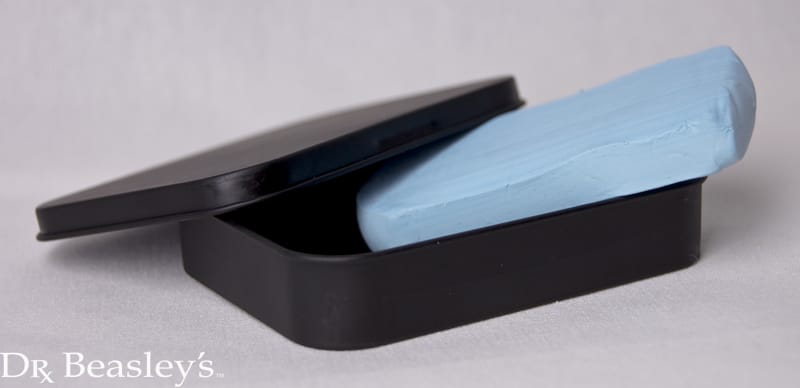When shopping for a clay bar, nothing matters more than what grade you select. Each grade is equally useful, just in different ways. Depending on the contaminants in or on your paint (overspray, debris, sap, environmental fallout), you may need a more aggressive grade of clay, but, as you’ll soon read, most car owners will be okay with a fine or medium grade clay bar. Keep reading to learn why.
Different Clay Bar Grades
Fine clay bars tend to be the easiest to use simply because the clay is softer. Fine clay is great for a lightly contaminated finish, but not so great at removing things like sap and overspray. If you clay your car regularly, you shouldn’t need anything more than a fine grade clay bar. Medium clay is more aggressive than fine and will almost certainly microscopically mar the surface as you’re claying because it weighs more. Medium clay, being more firm and dense, will remove stubborn debris and contaminants that fine clay cannot. For the most part, when you clay with a medium grade clay bar you should always polish afterward. Heavy clay bars really aren’t recommended unless you’re dealing with overspray or other hard to remove contaminants. While heavy clay is often considered overly aggressive for clear coats, it is great on metal wheels and glass. Since these surfaces are much harder than your car’s paintwork, clay works just as good without as much harm. When it comes to paint, just be sure you absolutely have to use the heavy grade bar by first trying medium or light clay to cure whatever is ailing your finish.
The Verdict
If your decision were up to me, I’d tell you to stick with a medium grade clay bar. First and foremost, it’s more pliable than a heavy clay bar) and therefore more useful to you in your garage). Additionally, heavy clay is often too powerful for what you need to remove and fine may not be strong enough. Medium will get the job done unless you’re dealing with overspray or something similar. In my mind, medium grade clay is the best of both worlds because it combines power and ease to remove embedded contaminants and debris without causing excessive micro-marring. I still recommend polishing after using medium clay, but just because I say that doesn’t mean you have to go grab the high-speed Mikita. You can tidy up your finish after claying fairly easily with a less abrasive machine and more effective products — or you can even coat a finishing glaze on the surface and follow with a wax to yield a great shine. Take what you need and share what you liked… happy claying, everyone. What do you look for in a clay bar? Let us know in the comments!


This is not very helpful. Key piece of information is how to identify these different grades of clay bar.
Generally it would be by the packaging the clay comes in. Its also easy to tell by which grade you order.
I agree with the comment about explaining the gram example100g and is it light or medium or heavy. Have read hours of articles and none give you the grade number when explaining while explaining what they do.
Question? I have a 2016 black Tundra that stays out in the NJ elements. I’ve never clay bared it. It has rain spots and other spotsI can’t I can’t identify. Should I use a medium bar to start? BTW it has been waxed quite a few times in it’s life.
How do I know if Fine, Medium, or Course? By colour? Is this the standard way to determine? Or? Thanks